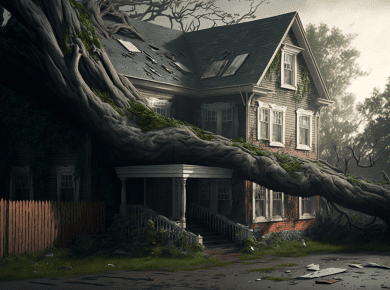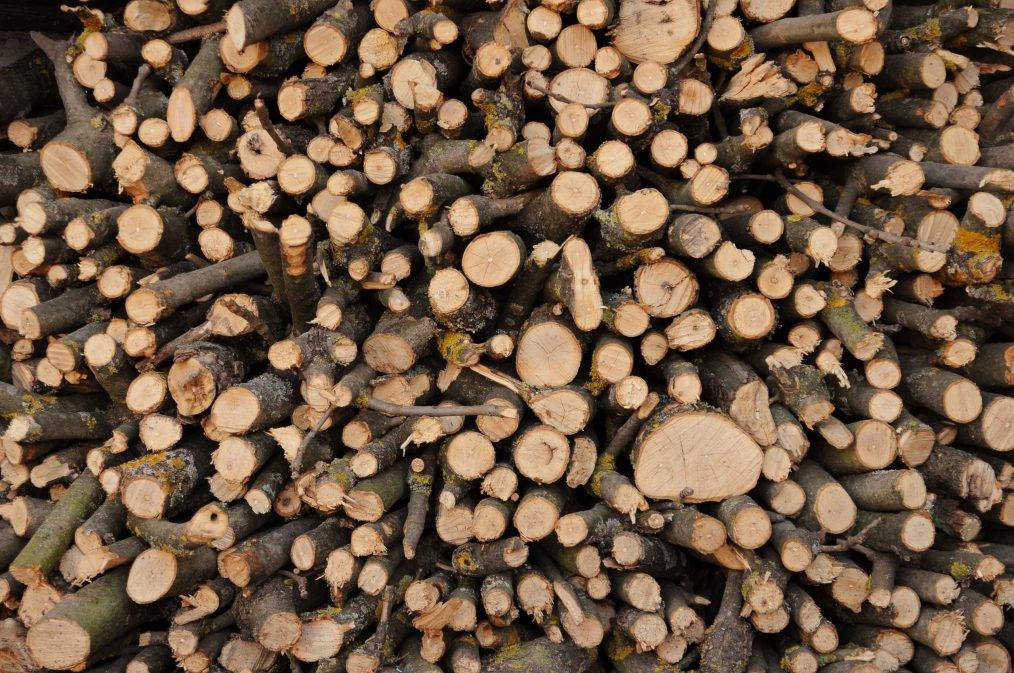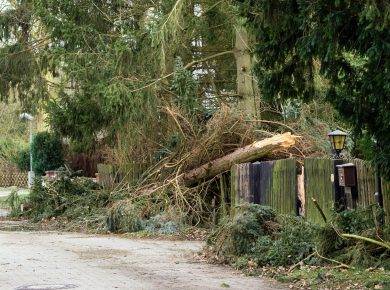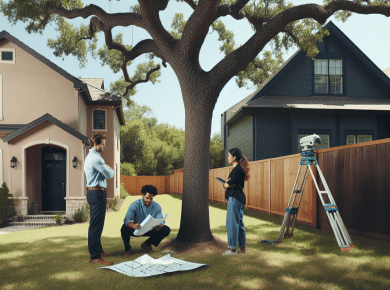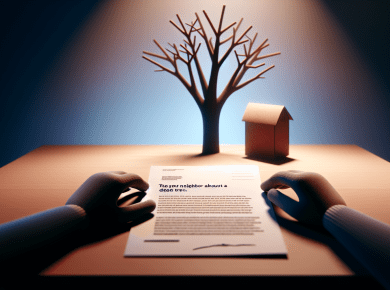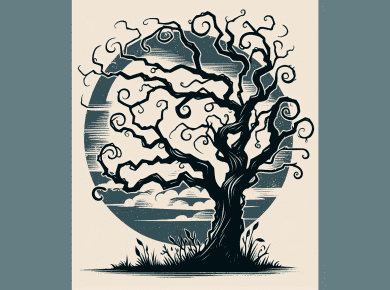Understanding Tree Ownership
Understanding tree ownership is essential for handling disputes regarding neighbors’ trees overhanging property lines. Ohio has specific laws that dictate who owns a tree based on its location, particularly regarding boundary trees.
Ohio Laws on Tree Ownership
In Ohio, the ownership of a tree is determined by the location of its trunk. If the trunk stands on a homeowner’s property, that homeowner owns the tree, including all parts such as roots and branches, regardless of whether these extend into the neighboring property. This principle holds even if the branches or roots encroach into a neighbor’s yard.
| Tree Location | Ownership Status |
|---|---|
| Entirely on your property | You own it completely |
| Entirely on neighbor’s property | Neighbor owns it completely |
| On the property line | Shared ownership |
When a tree is situated on the boundary line between two properties, both neighbors have ownership interests in that tree. However, if only parts of a tree, such as branches or roots, extend into a neighbor’s property, those extensions do not confer any ownership rights over the entire tree.
| Tree Position | Ownership and Rights |
|---|---|
| Entire trunk on one side | Owner of the property where the trunk resides owns the tree |
| Trunk on the boundary | Both neighbors co-own the tree |
| Branches/roots over property line | No ownership transfer occurs |
This shared ownership brings specific responsibilities. Under Ohio law, neighbors must seek permission from each other before performing any actions on a boundary tree.
Being aware of these laws can help mitigate disputes and guide neighbors as they navigate their rights and responsibilities regarding trees that may pose issues such as overhanging branches. For added clarity on neighbor relations, consider various resources like a sample encroachment letter to neighbor to communicated properties and tree matters effectively.
Rights and Responsibilities
Navigating the complexities of dealing with neighbor’s trees can present various rights and responsibilities. It is crucial to understand the laws governing tree ownership and the rights related to maintaining your property.
Trimming Overhanging Branches
In Ohio, landowners have the legal right to trim branches that extend over their property line, even if they originate from a neighbor’s tree. However, this right comes with the obligation to act with “reasonable care” during the trimming process. If a landowner causes harm, such as disease or death of the tree due to improper trimming techniques, they may face liability.
| Action | Description | Potential Liability |
|---|---|---|
| Trim branches | Cut branches overhanging your property | Harm caused to the tree can lead to legal action |
| Use proper techniques | Ensure that trimming does not harm tree health | Liability for improper methods |
The ownership of the tree is determined by where the trunk is located. If the trunk is on private property, the owner has rights to all parts of the tree, including roots and branches, even if they extend onto neighboring land. It’s vital to assess the tree’s ownership correctly before proceeding with any maintenance decisions.
Property Damage Liability
Property owners must be aware of their liability when dealing with neighbor’s trees, especially when tree branches or roots may cause damage. If a neighbor’s tree falls and causes damage to your property, the question of liability may arise. Ohio law does not explicitly address ownership of timber or firewood from fallen trees straddling the property line. It is advisable to communicate with the neighbor regarding ownership and to allow them reasonable time to claim the debris (Ohio State University Extension).
If a property owner acts recklessly and their actions lead to property damage, they could be held responsible. Proper documentation of any damage, along with communication records about the tree, can serve as important evidence should disputes arise.
For further guidance on these matters, individuals may want to explore options for official correspondence with neighbors, such as a letter to neighbor about tree or understanding more about who is responsible for cutting overhanging tree branches. Understanding both rights and responsibilities can lead to more amicable resolutions in any disputes involving trees.
Legal Considerations
Navigating the legal landscape surrounding neighbor’s trees can be complex, especially when it comes to tree removal laws and compensation for damages. Understanding these aspects is crucial for resolving disputes effectively.
Tree Removal Laws
In general, ownership of a tree depends on its location. If a tree’s trunk is wholly within one neighbor’s yard, that neighbor owns the tree. However, if the tree trunk straddles the property line, it is considered a “boundary tree,” and all adjacent property owners share ownership and responsibility for it. Unauthorized removal of a boundary tree without the consent of all property owners is unlawful.
The following table outlines ownership scenarios for trees based on their placement:
| Tree Location | Ownership Status | Responsibilities |
|---|---|---|
| Entirely on one property | Owned by that neighbor | Responsible for maintenance and removal |
| Straddling property line | Shared ownership | Both neighbors must consent to any removal |
Damage Compensation
If a neighbor engages in tree removal or pruning without permission and causes damage, they may be liable for compensating the tree’s owner. Furthermore, if a neighbor’s tree limb causes damage due to improper maintenance, liability may fall on the tree owner. Landowners must maintain trees on their property; neglecting to manage a dangerous tree can lead to liability if damage occurs (FindLaw).
In Ohio, if a tree on the property line poses a nuisance by interfering with property use, the affected neighbor may file a nuisance claim. This can result in a court-ordered removal if deemed necessary by a legal judge (Ohio State University Extension).
Consider the following table for liabilities concerning tree-related damages:
| Scenario | Possible Liability |
|---|---|
| Neighbor cuts tree without permission | Neighbor liable for damages |
| Tree branch falls due to lack of maintenance | Tree owner liable for damages |
| Nuisance claim filed on property use | Possible court-ordered removal |
Understanding local tree laws and liabilities helps neighbors in resolving issues related to trees that overhang or disrupt property lines. If disputes arise, parties may consider drafting a letter to neighbor about tree or consulting legal services to better understand their rights.
Neighbor Communication
Addressing issues related to neighboring trees can be complex. Communication is key in resolving disputes without escalating tensions. It is important to understand legal rights while maintaining a neighborly relationship.
Resolving Tree Disputes
Initially, open dialogue can help prevent misunderstandings. When dealing with overhanging branches from a neighbor’s tree, it is advisable to approach the neighbor informally. Discuss concerns about encroachment and damage to property, emphasizing the shared goal of finding a solution that is agreeable for both parties.
According to Ohio law, landowners can trim branches that extend over property lines, but they must exercise “reasonable care” to avoid harming the tree’s health (Ohio State University Extension). Thus, informing the neighbor before taking any action helps in fostering goodwill. You may suggest a plan for branch trimming, and if necessary, offer assistance or even professional help if the tree is particularly large or fragile.
If communication with the neighbor does not lead to a solution, maintaining a written record of all correspondence is beneficial. For formal notifications, consider sending a letter to neighbor about tree to outline your concerns clearly.
Legal Actions for Nuisances
Should amicable communication fail, legal avenues may be a necessary step. If overhanging branches pose a substantial nuisance or if damage occurs, the affected party has the right to pursue legal action. Nuisance claims might include scenarios where a neighbor’s tree roots damage fences or paths, potentially resulting in liability (JustAnswer).
In such cases, it is crucial to document any damage and communicate these findings—ideally through a certified letter—to ensure that the neighbor is aware of the situation. Should the need arise to file a claim, your documentation will serve as evidence illustrating the ongoing issue.
If a neighbor has neglected to remove a tree that presents danger or interferes with property usage, filing a nuisance claim may lead to legal remedies including a court-ordered tree removal (FindLaw).
Being prepared with documentation and having legal backing can strengthen one’s position. Understanding the legal landscape surrounding disputes involving trees helps protect property rights while promoting fair interactions. For more detailed guidance on tree-related issues, consider looking into related topics such as who is responsible for cutting overhanging tree branches or can you sue someone for cutting down trees on your property.
Ohio-Specific Regulations
Navigating the complexities of tree ownership and management in Ohio requires a clear understanding of the state’s regulations, particularly when it comes to utility rights and unauthorized tree removal penalties.
Utility Company Rights
In Ohio, utility companies typically possess the right to trim trees located on private properties if they have a right of way or easement to maintain utility infrastructure. This means homeowners cannot prevent utility companies from exercising this right, even if the trees have not been recently trimmed (Ohio Farm Bureau Federation). This provision is crucial for residents to understand, as it ensures that utility lines remain safe and functional without undue interference from property owners.
| Utility Rights in Ohio | Description |
|---|---|
| Right to Trim Trees | Utility companies may trim branches to maintain infrastructure. |
| No Homeowner Opposition | Homeowners cannot stop utility companies from exercising their trimming rights. |
When it comes to unauthorized removal of trees, Ohio law mandates specific actions. Landowners have the right to trim branches and limbs that extend past the property line, but they must first notify the tree owner and provide an opportunity to address the issue. If improper trimming results in damage to the tree, the individual who performed the trimming could face liability of up to three times the value of the tree.
| Unauthorized Tree Removal | Penalty |
|---|---|
| Failure to Warn Tree Owner | Liability for damages may be incurred. |
| Improper Trimming Damage | Compensation could equal three times the tree’s value. |
It is essential for homeowners facing issues with neighboring trees to be aware of these rules. Understanding local regulations not only aids in resolving disputes but also helps protect property rights and minimize legal complications. For more guidance on how to communicate effectively with neighbors regarding tree issues, consider exploring our resources on writing a letter to neighbor about tree or tree trimming request letter to neighbor.
Practical Guidelines
Proper Branch Trimming
In Ohio, landowners possess the legal right to trim branches that overhang their property from a neighbor’s tree, provided they act with “reasonable care” in their trimming efforts. Improper trimming that causes harm, such as disease or death of the tree, can lead to liability. This principle is established in regulations outlined by the Ohio State University Extension.
Property owners are permitted to trim and remove branches, shrubs, and roots encroaching their property, although it is generally advisable to provide notice to the tree owner beforehand. Trimming is normally permitted up to the property line unless there is an immediate danger to life or property.
Key considerations for proper branch trimming include:
- Notice Requirement: Inform the tree owner before trimming.
- Trimming Zone: Only trim up to the property line.
- Disposal of Debris: Do not dispose of trimmed branches in the neighbor’s yard.
- Damage Liability: Improperly trimming a tree may result in liability for damages.
| Guideline | Description |
|---|---|
| Notify the Owner | Give notice to the tree owner before trimming. |
| Trim Responsibly | Ensure trimming does not harm the tree or property. |
| Avoid Disposal Issues | Dispose of cut branches legally, not in the neighbor’s yard. |
| Understand Liability | Be aware of potential liabilities for improper trimming. |
For more information on responsibilities, refer to the article on who is responsible for cutting overhanging tree branches.
Handling Property Damage
If a neighbor’s tree falls onto your property, the neighbor may be liable for damages, especially if the tree was known to be diseased, weak, or classified as “patently dangerous” (Ohio State University Extension).
In instances where tree roots damage property, such as fences or walkways, this can also be regarded as a nuisance, and liability might arise. It’s important to have evidence demonstrating the damage or the potential risk for liability to be established.
Furthermore, trees that sit on the boundary line shared by two properties are considered jointly owned and require mutual consent for removal or the involvement of a court order if disputes arise (JustAnswer).
Understanding these legal grounds is essential for navigating disputes regarding property damage caused by neighboring trees. For additional strategies, check out our guide on what to do if a neighbor’s tree is affecting you by visiting what to do if a neighbours tree is affecting you and consider resources related to potential legal action for damages.

